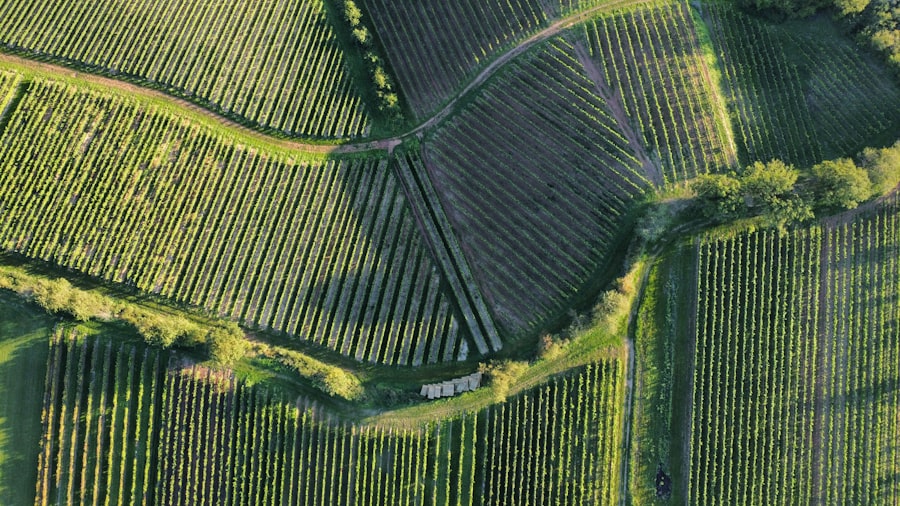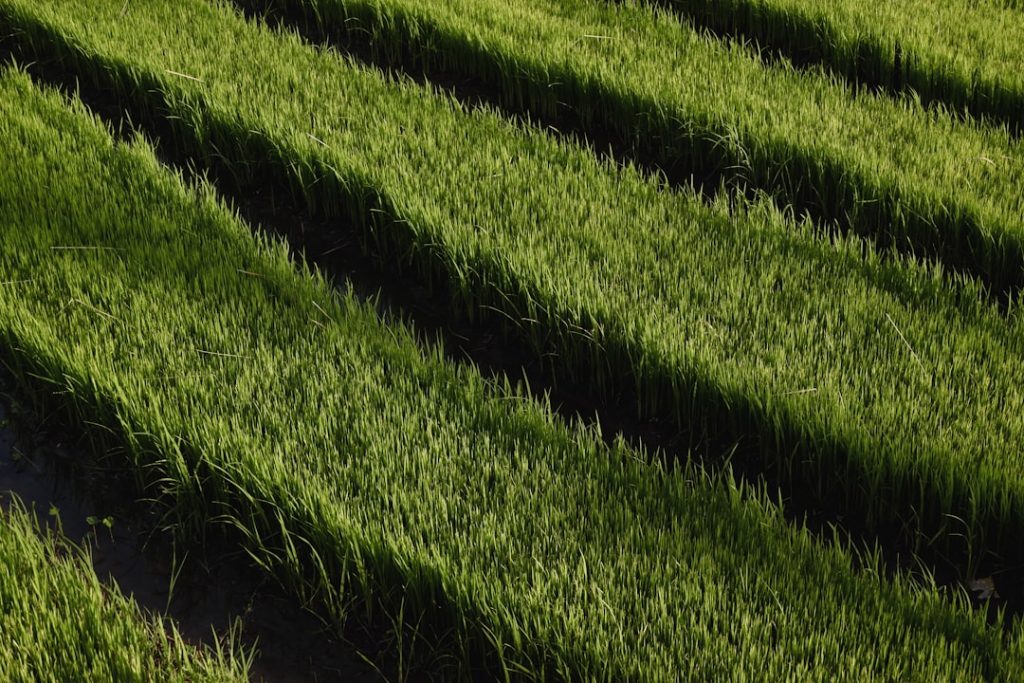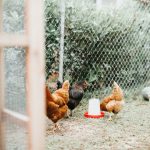Integrating chickens with grass areas offers numerous advantages for both the poultry and the landscape. Chickens benefit from access to fresh grass, which provides essential nutrients and promotes natural foraging behaviors. This practice also contributes to pest control and soil fertilization through the chickens’ scratching and manure deposition.
This article will examine the advantages of allowing chickens to graze on grass and provide guidance on maintaining a healthy grass environment for poultry. Topics covered include selecting appropriate chicken breeds for grazing, implementing effective rotational grazing systems, and preventing overgrazing and grass damage. By understanding these key aspects, poultry keepers can create a sustainable and mutually beneficial environment for their chickens and grass areas, whether in a backyard setting or on a larger scale.
This approach promotes the health and well-being of the flock while simultaneously enhancing the quality of the grass and soil.
Table of Contents
- 1 Benefits of Allowing Chickens to Graze on Grass
- 2 Tips for Maintaining a Healthy Grass Area for Chickens
- 3 Choosing the Right Breeds of Chickens for Grazing
- 4 Implementing Rotational Grazing for Chickens
- 5 Protecting Grass from Overgrazing and Damage
- 6 Conclusion and Final Tips for Keeping Grass with Chickens
- 7 FAQs
Key Takeaways
- Allowing chickens to graze on grass provides numerous benefits for both the chickens and the grass itself.
- Maintaining a healthy grass area for chickens involves regular mowing, avoiding overgrazing, and providing access to fresh grass.
- Certain breeds of chickens are better suited for grazing and can help maintain a balanced ecosystem.
- Implementing rotational grazing can help protect the grass from overgrazing and allow for regrowth.
- Protecting grass from overgrazing and damage involves monitoring the flock, providing alternative sources of entertainment, and using fencing to control access to certain areas.
Benefits of Allowing Chickens to Graze on Grass
Nutritional Benefits for Chickens
Grazing on grass provides chickens with essential nutrients such as vitamins, minerals, and protein. Grass also contains fiber, which is important for their digestive health.
Behavioral and Exercise Benefits for Chickens
In addition to the nutritional benefits, allowing chickens to graze on grass gives them the opportunity to engage in natural behaviors such as scratching and pecking, which helps to keep them mentally and physically stimulated. Furthermore, grazing on grass allows chickens to get exercise, which is important for their overall health and well-being.
Benefits for the Grass
For the grass, allowing chickens to graze can actually benefit its health and growth. As chickens graze, they naturally fertilize the grass with their droppings, providing it with essential nutrients such as nitrogen, phosphorus, and potassium. This natural fertilization can help to promote healthy and lush grass growth. Additionally, as chickens graze, they also help to control pests such as insects and grubs that can damage the grass.
Overall, allowing chickens to graze on grass can create a symbiotic relationship between the chickens and the grass, benefiting both parties in the process.
Tips for Maintaining a Healthy Grass Area for Chickens

Maintaining a healthy grass area for chickens requires some careful planning and management. One important tip is to ensure that the grass area is large enough to accommodate the number of chickens in your flock. Overcrowding can lead to overgrazing and damage to the grass, so it’s important to provide enough space for your chickens to graze without putting too much pressure on the grass.
Additionally, it’s important to regularly monitor the grass area and rotate the chickens to different sections to allow the grass to recover and regrow. This can be done through rotational grazing, which we will discuss in more detail later in this article. Another important tip for maintaining a healthy grass area for chickens is to provide supplemental feed in addition to allowing them to graze on grass.
While grass provides essential nutrients, it may not always be enough to meet all of their dietary needs, especially during certain times of the year or in certain climates. Providing a balanced diet that includes a mix of grains, seeds, fruits, and vegetables can help to ensure that your chickens are getting all of the nutrients they need to stay healthy and productive. Finally, it’s important to regularly monitor the health of your grass area and address any issues such as compaction, erosion, or weed growth that may arise.
Choosing the Right Breeds of Chickens for Grazing
When it comes to keeping grass with chickens, choosing the right breeds is an important consideration. Some breeds of chickens are better suited for grazing than others, so it’s important to select breeds that are known for their ability to thrive on a diet that includes a significant amount of grass. Breeds such as Australorp, Orpington, Sussex, and Plymouth Rock are known for their ability to graze and forage for food, making them well-suited for keeping grass with chickens.
These breeds are generally hardy and adaptable, making them well-suited for a variety of climates and environments. In addition to considering the grazing abilities of different breeds, it’s also important to consider other factors such as egg production, temperament, and climate tolerance when choosing breeds for grazing. For example, if you are primarily interested in keeping chickens for their eggs, you may want to prioritize breeds that are known for their high egg production.
Similarly, if you live in a particularly hot or cold climate, you may want to prioritize breeds that are known for their ability to tolerate extreme temperatures. By carefully considering these factors, you can choose breeds that are well-suited for grazing while also meeting your other needs and preferences.
Implementing Rotational Grazing for Chickens
Rotational grazing is a key strategy for maintaining a healthy grass area for chickens while also allowing them to graze on fresh grass. Rotational grazing involves dividing the grazing area into several sections and rotating the chickens between these sections on a regular basis. This allows each section of grass to recover and regrow while the chickens graze on another section.
Rotational grazing helps to prevent overgrazing and damage to the grass while also ensuring that the chickens have access to fresh and nutritious grass at all times. To implement rotational grazing for chickens, it’s important to carefully plan out the grazing area and divide it into sections that are large enough to accommodate your flock. The number of sections and the frequency of rotation will depend on factors such as the size of your flock, the size of the grazing area, and the rate of grass regrowth.
It’s important to monitor the condition of each section of grass and rotate the chickens before they have completely grazed it down. By carefully managing rotational grazing, you can ensure that your chickens have access to fresh grass while also promoting healthy grass growth. In addition to promoting healthy grass growth, rotational grazing can also help to control parasites and pests that may be present in the grass.
By allowing each section of grass to rest and recover between grazing periods, you can help to break the life cycle of parasites such as worms and reduce their prevalence in the grazing area. Overall, implementing rotational grazing for chickens is an effective strategy for maintaining a healthy grass area while also providing your flock with a nutritious and varied diet.
Protecting Grass from Overgrazing and Damage

Monitoring and Rotating Grazing Areas
While allowing chickens to graze on grass offers many benefits, it’s important to take steps to protect the grass from overgrazing and damage. Overgrazing occurs when chickens consume too much of the grass in a given area, leading to bare patches, soil erosion, and reduced grass regrowth. To prevent overgrazing, it’s important to carefully monitor the condition of the grass area and rotate the chickens between different sections on a regular basis.
Providing Supplemental Feed
In addition to rotational grazing, providing supplemental feed can help to reduce the pressure on the grass and prevent overgrazing. By ensuring that your chickens have access to a balanced diet that includes grains, seeds, fruits, and vegetables, you can help to reduce their reliance on grazing alone. This can help to prevent overgrazing while also ensuring that your chickens are getting all of the nutrients they need to stay healthy and productive.
Managing Stocking Density
Another important consideration for protecting grass from overgrazing is managing the stocking density of your flock. Overcrowding can lead to increased pressure on the grass and contribute to overgrazing and damage. It’s important to provide enough space for your chickens to graze without putting too much pressure on the grass. This may involve reducing the size of your flock or increasing the size of your grazing area to ensure that your chickens have enough space to graze without causing damage.
Conclusion and Final Tips for Keeping Grass with Chickens
In conclusion, keeping grass with chickens offers a wide range of benefits for both the chickens and the grass itself. Allowing chickens to graze on grass provides them with essential nutrients, exercise, and mental stimulation while also helping to control pests and fertilize the soil. To maintain a healthy grass area for chickens, it’s important to carefully manage rotational grazing, provide supplemental feed, choose the right breeds of chickens for grazing, and protect the grass from overgrazing and damage.
Final tips for keeping grass with chickens include regularly monitoring the condition of the grass area, addressing any issues such as compaction or erosion, and providing access to fresh water at all times. By carefully managing your flock’s grazing habits and taking steps to protect the grass from overgrazing, you can create a healthy and sustainable environment for both your chickens and your lawn or pasture. With proper planning and management, keeping grass with chickens can be a rewarding experience that benefits both your flock and your outdoor space.
If you’re looking for more information on how to keep grass with chickens, you might want to check out this article on choosing the right flooring for your chicken coop. It’s important to consider the impact of your coop on the surrounding grass, and this article offers some helpful tips for maintaining a healthy lawn while keeping chickens.
FAQs
What are the benefits of keeping grass with chickens?
Keeping grass with chickens provides several benefits, including providing a natural foraging area for the chickens, reducing the need for commercial feed, and promoting a healthier environment for the chickens.
How can I keep grass with chickens?
To keep grass with chickens, you can rotate the chickens to different areas of the yard or pasture to allow the grass to regrow. You can also use chicken tractors or movable fencing to confine the chickens to specific areas while allowing the grass to recover in other areas.
What types of grass are suitable for chickens?
Chickens can graze on a variety of grasses, including ryegrass, fescue, and clover. It’s important to provide a diverse mix of grasses to ensure that the chickens have access to a range of nutrients.
How can I protect the grass from being destroyed by the chickens?
You can protect the grass from being destroyed by the chickens by using movable fencing or chicken tractors to confine the chickens to specific areas. You can also rotate the chickens to different areas to allow the grass to regrow.
Are there any potential drawbacks to keeping grass with chickens?
One potential drawback of keeping grass with chickens is that the chickens may overgraze certain areas, leading to bare patches of soil. However, this can be mitigated by rotating the chickens to different areas and providing a diverse mix of grasses for them to graze on.
Meet Walter, the feathered-friend fanatic of Florida! Nestled in the sunshine state, Walter struts through life with his feathered companions, clucking his way to happiness. With a coop that’s fancier than a five-star hotel, he’s the Don Juan of the chicken world. When he’s not teaching his hens to do the cha-cha, you’ll find him in a heated debate with his prized rooster, Sir Clucks-a-Lot. Walter’s poultry passion is no yolk; he’s the sunny-side-up guy you never knew you needed in your flock of friends!







